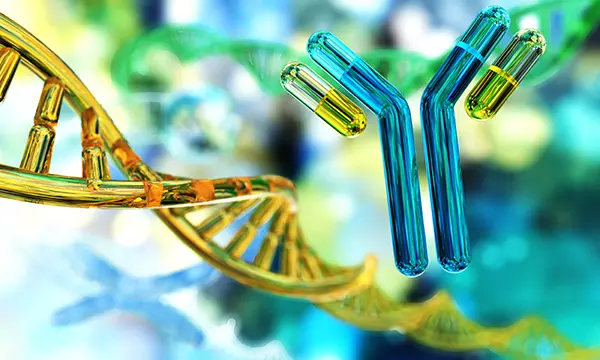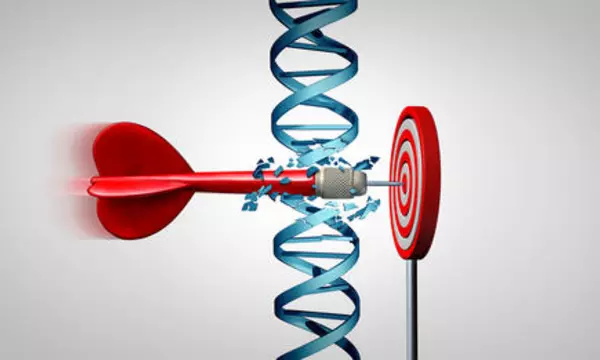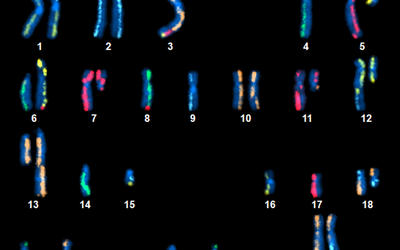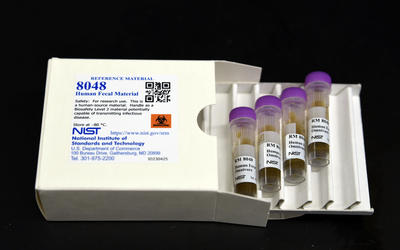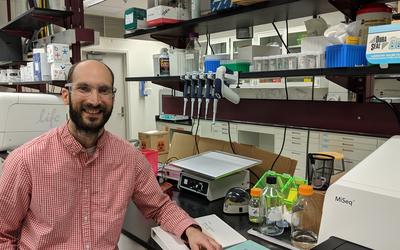NIST develops standards, methods, tools, and technology to advance the reliability of genomic measurements for use in biotechnology including genome editing, human genome sequencing, cancer genomics, and bioinformatics.
NIST's programs in genomics are supported by our deep expertise in measurement science, molecular biology, cancer biology, and bioinformatics. For example, NIST scientists led the development of the world's first and only whole genome reference materials, authoritatively characterized by the NIST-led Genome in a Bottle Consortium; these human genomes provide laboratories with the capability to accurately “map” DNA for genetic testing, benchmark sequencing technologies and bioinformatics, and develop new medical diagnostics and future customized drug therapies. The NIST-led Genome Editing Consortium aims to address the measurements and standards needed to increase confidence and lower the risk of utilizing genome editing technologies in research and commercial products. NIST's cancer biomarker reference materials help researchers and clinicians establish analytical validation of their measurement processes.
News and Updates
Key Accomplishments
- The NIST Genome Editing Consortium Lexicon Working Group has developed a standard genome editing lexicon, with 42 defined terms. This lexicon was developed to provide a unified reference set of terms and technical definitions that standardizes their use and meaning, helping the biotechnology community have productive communications.
- NIST’s human genome reference material, the first of its kind in the world, generated data that is accurate enough to be used as a benchmarking tool for medical and research labs. The U.S. Food and Drug Administration used this resource to approve one of the first commercially available next-generation DNA sequencers for clinical use.
- NIST now offers four additional human genome reference materials to help test labs assess their ability to measure genetic links within families, and compare and contrast genes from people with different lineages. These additional materials increase the confidence of DNA sequencing labs in reporting results, improving genetic tests used for disease risk prediction, diagnosis, and progression tracking. These reference materials also give companies reliable data to guide innovation in hardware, software and clinical research.
- GIAB developed the first benchmark of large structural changes that occur in the human genome, which will enable clinical translation and technology development for detection of diseases associated with these difficult-to-detect changes; GIAB benchmarks helped demonstrate the performance of a new nanopore-based technology; collaboration with PacBio to benchmark performance of a new highly accurate long DNA sequencing technology. NIST and GIAB continue to use new technologies to shed light on accuracy of more and more challenging DNA sequences.
- Researchers from NIST patented the first short tandem repeat DNA method for authenticating the mouse cell lines used for genetic research. The method enables better use of taxpayers’ investment in science by helping to provide assurance that cell lines are as labelled.
- NIST researchers in the cancer biomarker team used human cancer cell lines for copy number measurements and to develop reference materials of the genes for ERBB2 (HER2), EGFR, and MET and characterized the materials using an interlaboratory testing program.
- A NIST-led consortium of more than 100 organizations from the public, private and academic sectors created the first-ever reference material that is used to produce spike-in controls for RNA measurements. The reference material helps labs check the technical performance of their equipment, giving them confidence that they have reliable, reproducible measurements of the activity of genes, which influence our health and can be manipulated in other organisms to make commercial products. The reference material is used for product and method development, and quality control.



